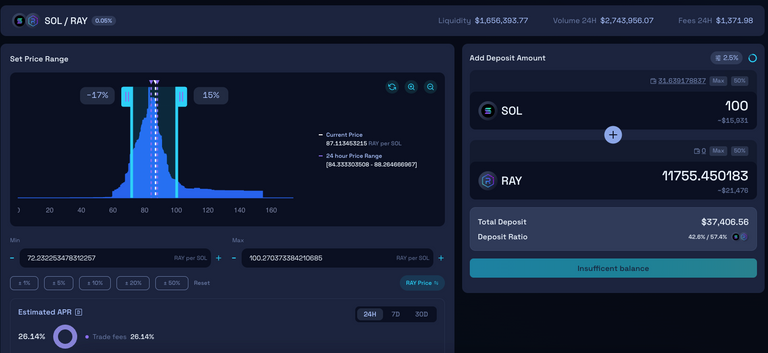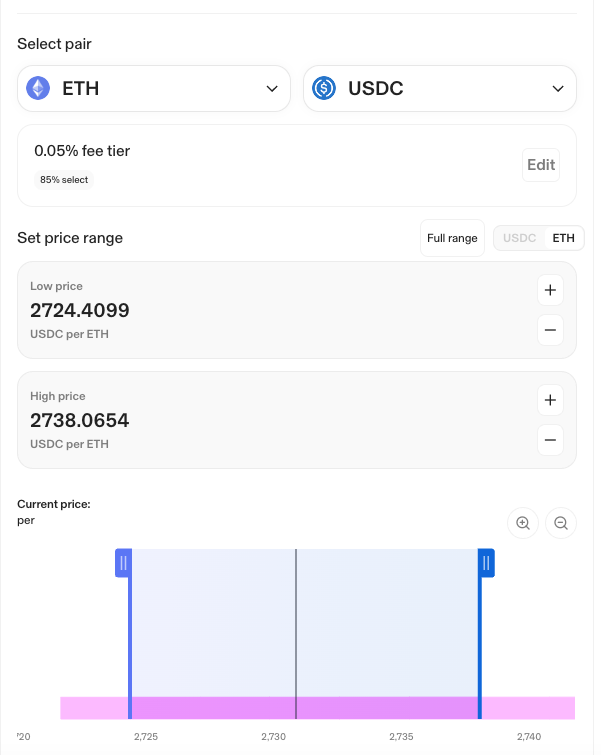Concentrated Liquidity Market Makers (CLMMs) have revolutionized the way liquidity is provided in decentralized exchanges (DEXs).
By allowing liquidity providers (LPs) to concentrate their capital within specific price ranges, CLMMs enhance capital efficiency and offer opportunities for higher returns. This article explores strategies to maximize asset profit through CLMM pools and the benefits and risks associated with this innovative approach.

CLMM Pool in Raydium

Uniswap's CLMM
Understanding CLMM
A CLMM is an advanced form of Automated Market Maker (AMM) that allows LPs to allocate their liquidity within a chosen price range rather than across the entire price spectrum. This concentrated approach can lead to increased capital efficiency and higher yields, as LPs can focus their resources where trading activity is most likely to occur.
Strategies to Maximize Asset Profit
Select Optimal Price Ranges:
- Choose price ranges based on historical price data and market trends. Concentrating liquidity around anticipated price movements can maximize trading fees.
- Regularly adjust the price range to align with market conditions, ensuring that your liquidity remains active and profitable.
Utilize Dynamic Rebalancing:
- Actively manage and rebalance your positions to maintain optimal liquidity concentration. This involves monitoring market fluctuations and adjusting your price range accordingly.
- Tools and analytics platforms can assist in predicting price movements and optimizing liquidity placement.
Leverage Fee Tiers:
- Different DEXs offer various fee tiers. Selecting the right fee tier can enhance profitability by balancing the trade-off between fee income and trading volume.
- Higher fee tiers may be suitable for less volatile pairs, while lower fees can attract more volume in highly traded pairs.
Risk Management:
- Be aware of impermanent loss, which is more pronounced in CLMMs due to the concentrated nature of liquidity. Employ strategies such as stop-loss orders or automated rebalancing to mitigate these risks.
- Diversify your liquidity positions across multiple pairs to spread risk.
Advantages of CLMM
- Increased Capital Efficiency: By concentrating liquidity, LPs can achieve higher returns with less capital compared to traditional AMMs.
- Reduced Slippage: Traders benefit from deeper liquidity at specific price points, resulting in better trade execution and lower slippage.
- Higher Yield Potential: LPs can earn more from trading fees by focusing liquidity where it is most needed.
Disadvantages of CLMM
- Impermanent Loss: The risk of impermanent loss is heightened, requiring active management to mitigate.
- Complexity: Managing concentrated liquidity requires a more sophisticated understanding of market dynamics and active participation.
Future Outlook
As decentralized finance (DeFi) continues to evolve, CLMMs are expected to play a significant role in enhancing the efficiency and profitability of DEXs. The ability to concentrate liquidity offers compelling advantages, but also requires careful strategy and risk management. As more platforms adopt CLMM models, the tools and strategies for maximizing profits will continue to develop, offering new opportunities for savvy investors.
CLMMs provide a powerful mechanism for liquidity providers to optimize their asset allocation and maximize returns. By employing strategic price range selection, dynamic rebalancing, and effective risk management, LPs can capitalize on the benefits of concentrated liquidity while navigating its inherent challenges.